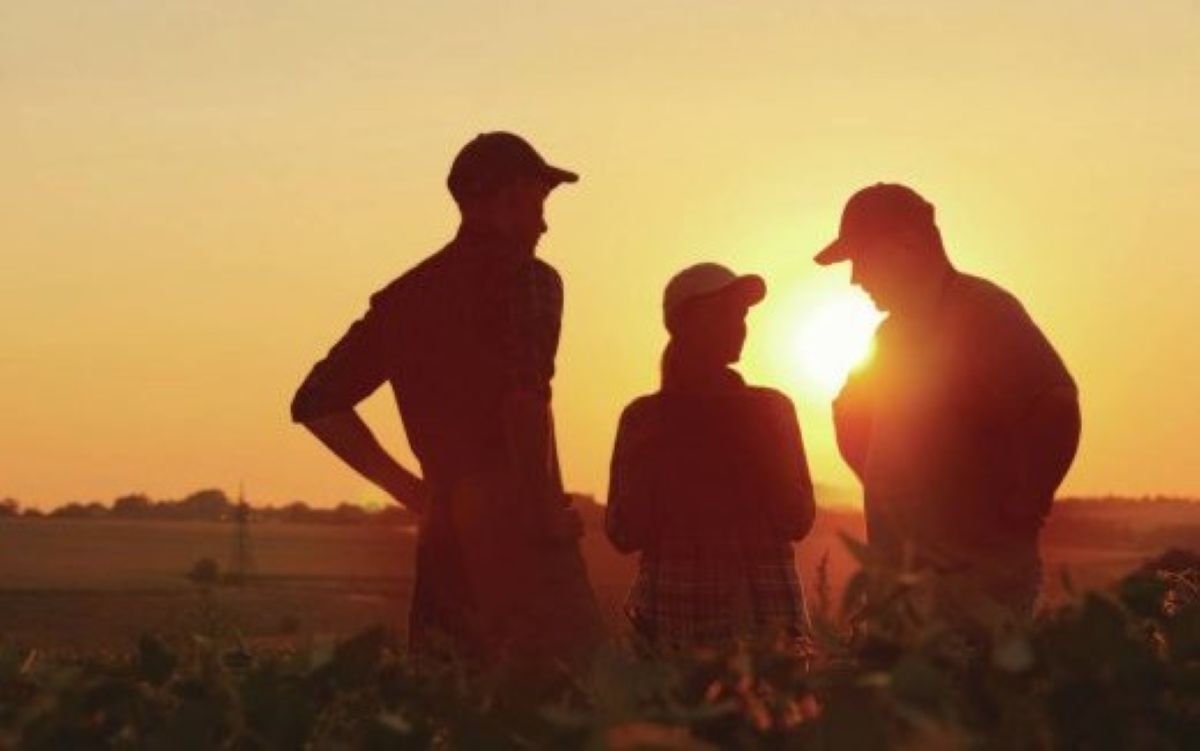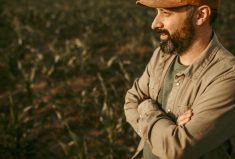Mobile technology is paying big time for Gary Sanocki. The challenge is, he wants it to pay even more
Here’s a question that your iPhone can’t answer. With all the phones and tablets out there, how much value can you expect mobile technology to add to your farm, and how much cost can you expect the learning curve, the program limitations, and the lack of connectivity to your PC to add to your farm?
Will mobile technology suck up time that you should be spending on “real” farm work, or is the technology already a money-maker everywhere it’s used on the farm?
As everyone knows, it’s all too easy to spend a huge amount of time at the computer, learning all sorts of wonderful things that you really don’t need to know… and that are never going to make you a dollar.
Read Also

The Secret Sauce of Sibling Run Farms
Working with family can be difficult, but successful sibling agricultural operations seem to leverage the unique advantages of their relationships to create growth for their farms.
In the same way with mobile technology, it’s all too easy to get hooked on watching commodity markets so you follow every tiny gyration all through the day, even though you know you don’t intend to sell any crop until next month.
“The question producers will ask of any new technology is, is it going to make me money or save me time?” says Andrew Campbell, an Ontario dairy farmer and founder of Fresh Air Media. “It has to fall under those two categories or it’s just not going to be adopted. Once producers are convinced that something is a valuable tool for them, they are going to use it.”
The challenge with e-technology is that both sides of the equation — value and time saving — are largely dependent on the individual producer. It isn’t like a new herbicide or a new GPS unit, where there’s basically one way to use it.
Getting selective about the information you need — and when you need it — is a learned skill, Campbell says, and one of the keys to developing that skill is to take advantage of the technology’s flexibility.
“I don’t have time to sit in on every webinar that comes up, so it comes down to which ones are the most important for me right now,” Campbell explains. “But the good thing about technology such as webinars is that you often choose when you want to watch them. If a webinar scheduled for noon eastern isn’t going to work for me that day, I can sit down and watch that video at 9 p.m. on my tablet, in an easy chair watching a hockey game at the same time.”
Mobile electronics are gaining ground in farm country. In a recent survey by Farm Credit Canada, 29 per cent of farmers said they own a smartphone, about the same as for Canadians overall. Roughly six per cent of farmers use tablets, again about the same as for other Canadians.
Farmers are also beginning to realize they can do a lot more with the computer in their pocket than just texting and email. “There really is no end to the possibilities with mobile devices like smartphones,” says Campbell. “Why bother going to the office when you can do it right from where you are?”
In the real world
Gary Sanocki has owned a smartphone for about four years and is convinced the technology has added extra capabilities and flexibility to his 1,800-acre farm near Eaglesham, Alta. Sanocki uses his iPhone (and an iPad) to connect via the web and social media platforms like Twitter with other farmers, his agrologist and more.
“I see tweets regarding weather conditions, bug problems, spraying recommendations,” Sanocki says. “I can see what other guys in my area are seeing in-crop. It’s like taking a crop tour with many people who have lots of expertise.”
Sanocki also gets information and ideas about equipment, seed varieties and different chemical products. “It’s been an irreplaceable source for contact with individuals who actually know things about the topics I’m interested in,” Sanocki says.
Sanocki’s wife, Fiona downloads lectures and podcasts to her iPod and iPad and listens to them when she’s on the tractor or combine or when she’s on a long drive, making better use of one of the scarcest commodities on the farm: time.
Few industries lend themselves as well to mobile technology as agriculture, where business isn’t conducted behind a desk, but rather from the barn, the combine or the grain truck en route to the elevator.
As a result, we’re seeing some agriculturally themed application software (apps) coming to the marketplace, although in general these are still sponsored by farm organizations or agribusinesses that provide them to the producer to add value in some way to the service or products they are offering.
An example is John Deere, a company that is ahead of the trend with its recently unveiled FarmSight technology, a suite of applications that can be used to optimize everything from equipment operation to decision-making through the use of mobile technology, and which also connects farm operators and managers to off-farm support services including agronomists and dealers.
The next step is to make this technology more useful for managing and adding value to individual farm businesses, says Peter Gredig of AgNition, a company that specializes in developing apps for mobile and web technology for agriculture.
“The primary benefit of mobile technology for agriculture is that your office can now be on your hip, along with the management tools that until now you have had to allocate time for first thing in the morning or at night,” says Gredig. “They will soon be with you wherever you go.”
Providing independent apps geared for producers to use for specific purposes should increase the appeal of mobile devices to farmers. “We think there is room for decision-making, management apps that have high value for the end-user, the farmer,” says Gredig.
Producers are already tapping the potential by, for instance, emailing their agronomist a picture of a weed or disease right from the field and getting immediate control recommendation. They’ve also begun working with equipment dealers, snapping a picture of a broken part to find out if it’s in stock.
These are getting better. AgNition has just released an app called ScoutDoc for iPad, which can be found at www.scoutdoc.com. It’s a simple scouting app for agronomists and producers, which allows them to go into the field and draw a map on the iPad screen or import a field map. They can write on the screen within defined fields to indicate disease, weed and insect pressure and make general notes about what they are seeing as they scout the field. Once completed, the report can be emailed back and forth between the agronomist and the farmer and forms a permanent, electronic record of field-specific information.
Getting better
Other tasks are evolving too. Soon it will be easier to take a video when you’re on a field tour and then share it with an employee when you get back to the farm. Or to confirm a bid for your crop as you harvest it. All of these things, and more, are starting to happen, but as the saying goes, we ain’t seen nothing yet.
Sanocki is ahead of the curve. He routinely uses his iPhone camera to send off pictures of crop issues or broken equipment parts to his agrologist or dealer to get advice or replacements faster. He takes pictures of serial numbers on equipment to be filed for future reference.
Sanocki says his iPhone allows him to conduct business anywhere, at any time and he now makes more grain sales and input purchases by text than he does by phoning. He especially likes the versatility of his iPad. “The iPad gets used a lot and the PC is used less since we got it,” he says. “The iPad is the main grab when we want to check emails pretty much anywhere and is nicer to use than the iPhone because of screen size.”
Not every farmer is going to rush out and embrace all that technology has to offer — at least not until their neighbours do. The FCC study reported that one-third of Canadian producers say they will try new technology once they hear positive feedback from their peers. “With any technology there are always a few early adopters and I think we certainly see that today with mobile devices,” says Campbell. “As more come on board they begin to take interest in what some of their neighbours use their mobile devices for and they discover how they are finding value in them, that gradually convinces more to jump on board.”
Campbell and others in the mobile industry think the greatest unexplored potential of smartphones and mobile devices is in the area of farm data management. “Data management is so critical to farms today. And I think producers have a hard time keeping track. I may have certain regulations here and my financials there and my crop plan somewhere else. Why is that not all together in one place on my phone where I can access it and update it in real time?” asks Campbell. “I really think that the industry needs to catch up in terms of data management.”
The barriers
So why is agriculture lagging behind? A big reason is cost, says Gredig.
Mobile programming is expensive, partly because there are so many devices and platforms like BlackBerry, iPhone, and Android, each requiring a different version of the app. Another factor is that the business model used to market consumer apps doesn’t fit all that well for agriculture.
“The web model has been that tools are put up and they are free for people to use,” says Gredig. “With sponsored apps the cost is covered by someone else.”
That micro-pay model — where you charge $1.99 for an app and 300,000 people buy it — doesn’t work in agriculture either, says Gredig. “Smartphone use is fast becoming mainstream in agriculture, but the numbers are still low relative to the general population. We can program apps to do almost anything, but once we get beyond sponsored or product support apps, producers will be asked to pay for the high-value apps they are looking for.”
How much they are willing to pay remains a big question and, once again, it comes down to value and functionality.
GPS software packages for PCs can cost in the range of $500 or more, which is a lot more expensive than the average office-style app that costs as little as $20. Sanocki feels something in the range of $100 might be the upper limit for something like a good GPS app, but it would need to do what he wants it to do and, importantly for him, he would want to be able to try it out first.
“One issue I have with a lot of apps is very few let you try before you buy,” Sanocki says. “I’m sure I’m missing out on good apps because I download the cheap or free one first and just put up with it because I’ve tried paid ones, opened them a couple times, hated them and never used them again.”
The work-arounds
Sanocki wants to be able to do a better job synchronizing his smartphone and desktop so he will be able to access most of his records, contracts, contacts and so on anywhere, even if he’s out of a service area. He also wants all his devices to automatically update when he returns to a service area.
Currently Sanocki uses an app called Dropbox to do this, which allows him to store and share files across his mobile devices. It’s a good example of what’s already available on the market, although it’s not specifically aimed at the agricultural industry.
Now, Sanocki would like to see apps that could allow his sprayer, seeder and harvesting equipment to communicate with his smartphone and download records straight into a field records program that would transfer automatically to his computer and save him a lot of time and effort.
“My records are only as good right now as the inputting,” Sanocki says. “That’s where I sometimes fall short, especially during peak times,” he says.
Sanocki would also like to have a better GPS app for his iPhone so he could transfer maps and manipulate them to add layers such as seed plot and soil sampling data, and then be able to find those spots without having to go drag out the laptop or use the same monitor that built the maps in the first place.
The upshot is, there is still plenty of scope for developers to come up with apps that will add a lot of value to the farm business.
Buried underneath, however, is a value that is proving more and more important for many farmers, even if it is hard to translate into dollars. That’s the social potential of the technology in an industry where isolation can be a real challenge.
“The social thing is important,” says Sanocki. “Like my sending what stupid thing I did today to my friends, and them sending their goofs to me too. It’s like a stress relief tool some days.” CG















